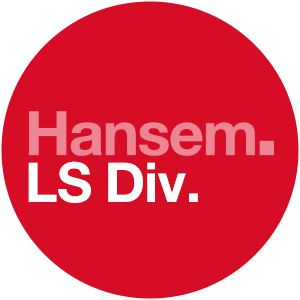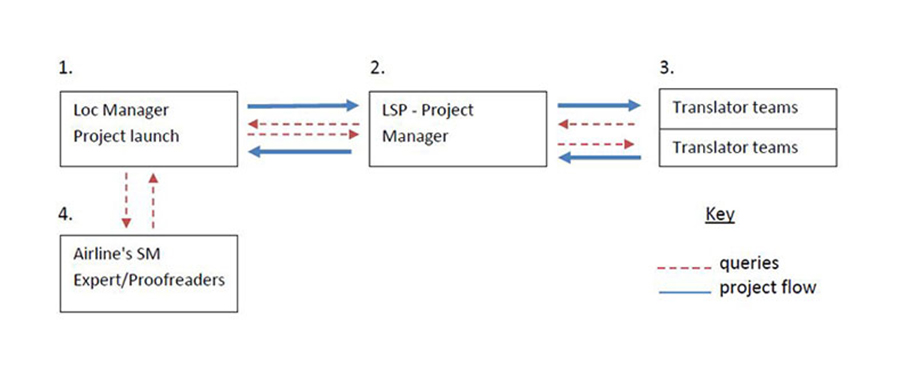

Localization


The company I work for has localized over 6.5 million words for the web pages of major and regional airlines around the world. Localizing web pages and marketing content for the airline industry is fascinating because of the inherent dynamics, promotions, individual branding, and of course the fun of travel and exotic destinations.
What I would like to do in this article is talk about localization of an airline’s web pages from the perspective of a language service provider and what we look at prior to starting localization projects for an airline, how we approach branding, the customer’s requirements, and of course the localization work flow from project launch to project delivery.
Note: The following comments and examples on branding are my own thoughts. They do not represent, endorse, or favour any particular airline.

In the super-competitive world of air travel, an airline’s branding needs to be effectively communicated through their website. For national carriers, the visibility of their branding and how it is presented is very important. For example, a major sporting event like the FIFA World Cup, art exhibitions, or important national cultural events are great opportunities for airlines to promote their brands. British Airways, Emirates, ETIHAD Airways, Qatar Airways, and Virgin Atlantic have particularly strong branding which is used for their websites, TV, and other advertising and sponsorships. EasyJet and RYANAIR are good examples of a budget/regional level branding. Therefore, the language service provider (LSP) needs to ensure that the web pages they localize are done by translators who understand the brand, the message that needs to be communicated, and the writing style the airline requires.
Subjects, Delivery Times, Volumes, Translation Management System, and Translation Tool
Before any pricing can be agreed upon, the LSP needs to take into account the airline’s subject matter, delivery expectations, required translation management system (TMS), and the translation tools the translators need to have.
Examples of Subjects to be Localized
Example of Project Delivery Times
Example of Likely Volumes
7 to 12 projects per week with approximately 75% of them being between 1501 and 3000 words.
Examples of TMS and Tools
Cloud-based TMS (not specified in this article)
Trados (or other translation tool)
Much of the content on airline web pages is dynamic, meaning there are ever-changing events and requirements continually reflected on their web site. Such content could have a predetermined life span, after which, is likely to be replaced by something else. These could be national events taking place that the airline wishes to capitalize on, frequent flyer programs and special offers, in-flight entertainment, and dining menus. Therefore, an LSP needs to have a workflow in place to turn around projects in multiple languages by the agreed delivery time. A late return of a translation project is likely to cause the airline’s localization department a great deal of trouble with their marketing department.
Let us assume that the necessary translating resources are in place for each target language, the next step is for the LSP’s Lead Project Manager to establish a workflow which will satisfy the airline’s delivery requirements and objectives, as well as generate an acceptable profit margin for the LSP. Whereas bottlenecks in finalizing projects sometimes occur when they reach the client’s subject matter experts (SMEs), this is usually not the case with airlines. An airline’s SMEs, whether internal or external, proofread text at the speed set by the localization department.
Diagram
Simple, 4-station workflow for the translation of airline web pages

Almost all communication between the airline’s SME’s is between the Localization Manager and individual SMEs. I mention this because there are various work flows concerning SMEs applicable for other types of projects, for example medical translations.
The LSP must:
I am always happy to share my localization knowledge and give free and impartial advice. You can contact me on michael.stephenson@hansem.com
Hansem Global is an ISO Certified and globally recognized language service provider. Since 1990, Hansem Global has been a leading language service company in Asia and helping the world’s top companies to excel in the global marketplace. Thanks to the local production centers in Asia along with a solid global language network, Hansem Global offers a full list of major languages in the world. Contact us for your language needs!
 Transforming B2C Sales Training with Gamification
04.14.2024
Transforming B2C Sales Training with Gamification
04.14.2024
 The Impact of Localization on Salesforce’s Success with Hansem Global
04.07.2024
The Impact of Localization on Salesforce’s Success with Hansem Global
04.07.2024
 Mastering Right-to-Left (RTL) Language Localization: Avoid the Top 5 Desktop Publishing (DTP) Mistakes for Global Success
04.03.2024
Mastering Right-to-Left (RTL) Language Localization: Avoid the Top 5 Desktop Publishing (DTP) Mistakes for Global Success
04.03.2024